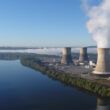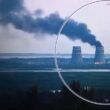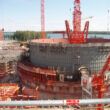We must focus on alternative energy technologies that can mitigate climate change in the near-term, not nuclear power
By Thomas B. Cochran, October 22, 2008
Stephen Goldberg argues that the United States must have a robust research and development program to create and deploy advanced reprocessing technologies and fast reactors in order for us to influence how other countries manage their nuclear fuel and waste. I’m reminded of early nineteenth-century parliamentary debates in Britain about the slave trade, where it was argued that the country should remain in the trade to guarantee the humane treatment of slaves.
Stephen also claims that I “prejudge the value of a vibrant advanced fuel cycle research and development program, including the discovery of new processes that would obviate [my] concerns.” Stephen is an eternal optimist who believes new discoveries will solve the economic and reliability problems confronting fast reactors and the economic woes of reprocessing. Where we part ways is that I believe research and development often reveals that some development paths are highly unlikely to succeed and aren’t fruitful or cost-effective to undertake further. Moreover, what Stephen proposes is likely to do more harm than good by promoting reprocessing research and development centers in non-weapon states.
Argonne National Laboratory, where Stephen works, has been pursuing the development of plutonium-fueled fast reactors since April 26, 1944. That’s when Enrico Fermi, Leo Szilard, Eugene Wigner, Alvin Weinberg, and others gathered there to discuss the possibility of using fast breeder reactors to heat and light cities. After 64 years and tens of billions of dollars it is abundantly clear that it is an uneconomic, unreliable, and proliferation-prone technology. It’s time to pull the plug on this effort and instead pursue more fruitful avenues of research. The same can be said, I might add, regarding research and development of magnetic and inertial confinement fusion technologies for electricity production.
But more importantly, we’re in the midst of a global climate and human development emergency. Now is the worst time to throw money at light-at-the-end-of-the-tunnel technologies. We need clean, scalable, cost-effective energy solutions now that can be safely, economically, and rapidly disseminated to the widest possible range of countries. Even if the proliferation and environmental risks could eventually be tamed, developing and building the industrial infrastructure to close the nuclear fuel cycle would require many decades before it yielded significant carbon displacement. The opportunity cost of such misplaced investment is enormous when you consider that it’s not only the gross amount, but also the timing of carbon reduction that matters.
Nuclear power will continue to play a modest role in mitigating climate change over the next 20-30 years–the most relevant time frame for addressing the climate issue. Its increased use will be predicated upon evolutionary improvements to the nuclear technology we have today, and not on some laboratory’s vision of an ideal closed fuel cycle. Facing a range of renewable power options–from biogas and small hydroelectric to wind, solar, and geothermal–that are cost competitive with electricity from new nuclear plants in various parts of the United States, a significant expansion of conventional nuclear power after 2030 is by no means assured.
Chasing the distant mirage of plutonium recycling in numerous fast reactors serves no useful purpose at this critical juncture in human history, so let’s prove we’re serious about dealing with the global energy and climate problem by putting this particular pipedream aside.
Topics: Nuclear Energy
Share: [addthis tool="addthis_inline_share_toolbox"]














